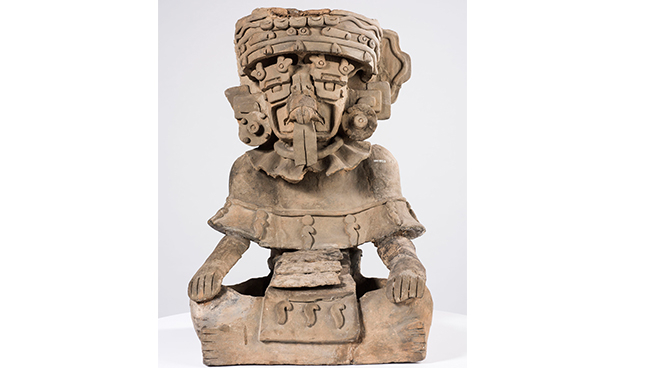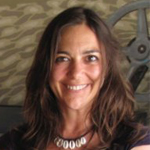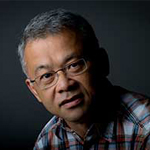ROM Research Colloquium: BLOG-A THON (Day 5)

Five researchers, five questions, five days.
Join us for the ROM Research Colloquium on February 23 and meet our researchers! Stay for the Vaughan Lecture given by Dave Rudkin.
What differentiates museum-based research (at the ROM) from university research or other forms of research?
 Silvia Forni: Well, certainly the focus on objects. Anthropology is a discipline that investigates culture from many different perspectives. At the museum we usually start from the objects, and use materials and collection as entryways to understand social dynamics and meanings. Colleagues at the university may chose to focus on many other aspects of culture that may not necessarily be connected to things. Objects are an interesting starting point, but when they are removed from their context, their cultural significance becomes more elusive and at the same time more complex. That said, fieldwork and archival research are absolutely necessary to get a better understanding of the meaning and social function of the things in the collection. So our research methodology is not different from that of our university colleagues.
Silvia Forni: Well, certainly the focus on objects. Anthropology is a discipline that investigates culture from many different perspectives. At the museum we usually start from the objects, and use materials and collection as entryways to understand social dynamics and meanings. Colleagues at the university may chose to focus on many other aspects of culture that may not necessarily be connected to things. Objects are an interesting starting point, but when they are removed from their context, their cultural significance becomes more elusive and at the same time more complex. That said, fieldwork and archival research are absolutely necessary to get a better understanding of the meaning and social function of the things in the collection. So our research methodology is not different from that of our university colleagues.
 Justin Jennings: Museum-based research in many ways is the same as other forms of research: you identify a problem and devise a way to attack it. Most of my work occurs in Peru and laws prohibit us from taking home everything but a few small samples. So in terms of field research, my work is not that much different than that done by a professor or other scholar. Museums though have millions of carefully catalogued objects that present several lifetimes of collecting. So those that do museum-based research not only builds off generations of written scholarship, but also generations of object scholarship. Museum’s can thus provide potential answers to problems that aren’t easily tackled by people doing fieldwork in some region over the course of a couple seasons. Museums are an incredible resource. One that is unfortunately often undervalued.
Justin Jennings: Museum-based research in many ways is the same as other forms of research: you identify a problem and devise a way to attack it. Most of my work occurs in Peru and laws prohibit us from taking home everything but a few small samples. So in terms of field research, my work is not that much different than that done by a professor or other scholar. Museums though have millions of carefully catalogued objects that present several lifetimes of collecting. So those that do museum-based research not only builds off generations of written scholarship, but also generations of object scholarship. Museum’s can thus provide potential answers to problems that aren’t easily tackled by people doing fieldwork in some region over the course of a couple seasons. Museums are an incredible resource. One that is unfortunately often undervalued.
 Burton Lim: Research at the ROM is primarily focused on a macro-evolution scale at the species level and above, so also including historical relationships of genera, families, and orders. Much of the university-based research is at the species level and below, such as ecology and population genetics within a species. But there is a lot of overlap, because I also study the community ecology or structure of biodiversity and how it compares with other areas. If done in a standardized method and on a regular basis, this allows us to build baseline data that enables the monitoring of changes in the environment.
Burton Lim: Research at the ROM is primarily focused on a macro-evolution scale at the species level and above, so also including historical relationships of genera, families, and orders. Much of the university-based research is at the species level and below, such as ecology and population genetics within a species. But there is a lot of overlap, because I also study the community ecology or structure of biodiversity and how it compares with other areas. If done in a standardized method and on a regular basis, this allows us to build baseline data that enables the monitoring of changes in the environment.
 Simona Margaritescu: What I think differentiates museum-based research from any other form of research is the proximity of a vast repository of specimens; its collections. Natural history museum collections not only offer access to a variety of species from all over the world but also provide glimpses into those species past. Additional specimens or information could easily be added to a research project and new research projects may stem from the curation of specimens. Museum-based research is as rigorous and significant as university research or any other form of investigation with the added bonus of a wonderful collection of specimens at hand.
Simona Margaritescu: What I think differentiates museum-based research from any other form of research is the proximity of a vast repository of specimens; its collections. Natural history museum collections not only offer access to a variety of species from all over the world but also provide glimpses into those species past. Additional specimens or information could easily be added to a research project and new research projects may stem from the curation of specimens. Museum-based research is as rigorous and significant as university research or any other form of investigation with the added bonus of a wonderful collection of specimens at hand.
 David Rudkin: In my mind, there are two major defining differences. The first, and most obvious, is that museums such as the ROM have, at their core, systematically maintained physical collections that are both permanent historical records of prior research, and sources of inspiration for new lines of investigation that may selectively expand the collection base. Many other kinds of knowledge-generating entities typically regard collections as encumbrances that hinder their ability to respond to shifts in research direction, and divest themselves of all but the most immediately relevant data. The second major difference resides in the vital role of direct public engagement - for museums, the results of their research are communicated, through the physical collections, into publicly accessible exhibits, galleries, programming, and increasingly, digital media.
David Rudkin: In my mind, there are two major defining differences. The first, and most obvious, is that museums such as the ROM have, at their core, systematically maintained physical collections that are both permanent historical records of prior research, and sources of inspiration for new lines of investigation that may selectively expand the collection base. Many other kinds of knowledge-generating entities typically regard collections as encumbrances that hinder their ability to respond to shifts in research direction, and divest themselves of all but the most immediately relevant data. The second major difference resides in the vital role of direct public engagement - for museums, the results of their research are communicated, through the physical collections, into publicly accessible exhibits, galleries, programming, and increasingly, digital media.
